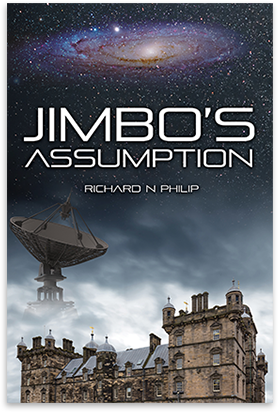
George Cayley
A recurring theme in our short human history is travel. The
persistent need or desire to be somewhere else on our planet’s surface. In
recent decades, space travel has become a practical but expensive reality, if
only in the vicinity of Earth, our home.
The overwhelming Homo sapiens experience, however, has been of journeys here, over land or water. Until recently, driven by short-term pressures, particularly food and shelter. Our roots are as hunter-gatherers. Relocation might have been imposed by exhaustion of local resources, competition from the neighbours, or a changing climate. Common to all these excursions was the need to walk. Bipedalism was the only option. No alternatives existed.
Circumstances changed with the advent of farming, the Neolithic Revolution, perhaps 12-thousand years ago. No new means of transportation, except those arising from animal domestication, but less need to move around. Families and communities became static, tied to the land, wholly dependent on the weather and their agricultural prowess for survival. If we disregard conflicts, religious turmoil, and occasional plagues, not much altered over millennia. Progress was slow. People lived, procreated, and died within the same locality.
In Europe, more recent times can be characterised by invading Roman legions, marauding Viking seafarers, and itinerant scholars disseminating ideas, but little change was experienced over the life of the common inhabitant. Tending land, acquiring a craft, raising children, and conforming to the prevailing faith were the boundaries. A steady supply of food would have remained the imperative.
Late in the 18th century, change suddenly occurred. The advent of an improved steam engine, the product of James Watt’s genius, portended the Industrial Revolution. Society was transformed, mills, factories, and mines became hubs of economic activity, not always happy places, but supplanting ageless rural subsistence. Traditions were toppled. Outlooks too.
In 1829 CE, the essayist Thomas Carlyle discerned “the age which, with a certain inevitable feeling, we name the Age of Mechanism. The very thoughts of men are mechanical.” Soon, the brilliance of Michael Faraday and Joseph Henry would introduce electromagnetic induction, if anything, a yet more transformative technology. The Age of the Electron, perhaps, but a story for another day.
We can regard the 19th century as the era of steam power. Iron-hulled steamships plied the Atlantic and beyond, empires expanded, trade grew, and families migrated in search of better lives. Railways were built, transporting ever greater volumes, bringing fresh fish to the cities and holidaymakers to the seaside.
Thus far, our narrative has introduced four eminences: a Londoner, an American, and two Scots. To this we can add a fifth, George Cayley, born in 1773 CE, a Yorkshireman. His father was a baron, an aristocrat, so young George’s early life differed greatly from the modest origins of his four contemporaries. The influence of his mother, Isabella Seton, an educated and perceptive Scot, was significant: she noted her son’s captivation with all things mechanical, so ensured his education encompassed mathematics and the sciences. While normal today, such choices were unusual in the 18th century, especially for a future baron.
Unusual, perhaps, but providential. While largely forgotten today, Cayley’s career addressed multiple technologies, leaving ideas and systems for successors to exploit. The list is long and diverse. Spoked wheels are in daily use. Caterpillar tracks (‘universal railway’ was his term). Automatic signals at railway crossings. Self-righting lifeboats. Hot air engines. His second engine design, in 1827 CE, is regarded as the forerunner to the internal combustion engine. Land reclamation, architecture, and ballistics all stimulated his lively imagination.
Patently, an engineer and an energetic inventor, but also a
scientist. His greatest contribution was as a physicist, defining the forces
acting on a body in flight.
Flying machines have long fascinated our species. Greek philosophers ruminated, while Roman soldiers would have pondered military applications. Leonardo da Vinci studied birds and conceived models, leaving us sketches. Lighter-than-air balloon flight was first accomplished in 1783 CE.
Heavier-than-air machines were Cayley’s target, a field he studied assiduously over his career, starting as a schoolboy. Contemplation and experiment led him to four vector forces that affect an aircraft in flight: lift, drag, thrust, and weight. A fundamental fact, as relevant today as it was early in the 19th century. The scientific method in action.
His efforts extended beyond the abstract. He built a succession of gliders, gleaning knowledge, absorbing insights, and assembling the science of aeronautics. From a first successful model flight in 1804 CE, Cayley progressed over nearly five decades to a short, manned flight. 1853 CE was the year and Brompton, Yorkshire was the location. Unfortunately, the identity of the pilot is uncertain. Certainly not Cayley, by then in his 80th year. Various accounts suggest an employee, maybe even his butler, others tend towards his grandson. A new age was on the horizon. Cayley laid the foundation stone.
More technologies emerged, internal combustion engines and propellors among them, which, united with Cayley’s research, brought us to 20th century aviation. Lightweight materials, jet engines, and radar, driven by our tendency to fight wars, built an industry and commonplace travel preference. The Age of Flight.
Today, George Cayley is an obscure character but remembered within aerospace circles. Replicas of the Cayley Glider, as it became known, have been built, flown, and exhibited. Three British universities commemorate him. The Royal Air Force Museum, too. Inducted into an American air & space hall of fame.
The closing words are also American, the opinion of another aviation pioneer, Wilbur Wright, speaking in 1909 CE:
“About 100 years ago an Englishman, Sir George Cayley, carried the science of flying to a point which it had never reached before and which it scarcely reached again during the last century.”
Post Views : 33